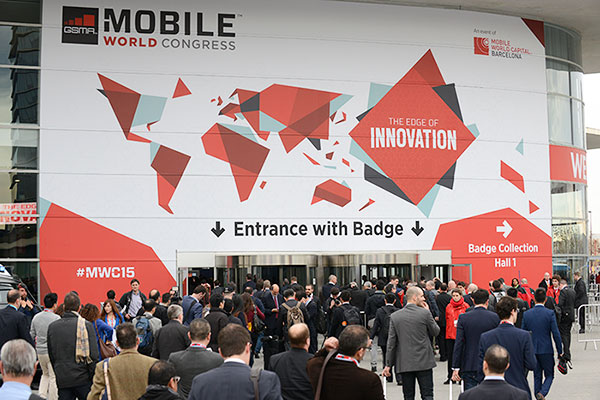The latest handsets and tablets received their typical share of headlines at this year’s Mobile World Congress in Barcelona, but their mindshare shrank considerably.
In what may mark its last hurrah in the mobile market, Sony unveiled its Xperia Z4 tablet after a series of leaks and teases leading up to the event. Meanwhile, Samsung’s latest iPhone answer, the Galaxy S6, stole the spotlight.

However, with more than 2,000 tech organizations promoting their wares and services — most of which didn’t bring iPhone, iPad or Apple Watch assassins — MWC 2015 offered consumers and investors a fresh set of promises, electrifying trade show audiences and intriguing those who watched from afar.
Three categories promised life-changing innovations in the near future.
Smart Things
This year’s MWC was more about the smart things that orbit smartphones, rather than the handsets themselves, according to eMarketer analyst Bill Fisher.
“The number of smartwatches and fitness trackers on show was phenomenal,” he told TechNewsWorld, “but other devices that track and record our movements were also out in force — from smart toothbrushes to smart tennis rackets.”
While manufacturers have been battling power and appearance issues with their tech, smartwatches continued to gain acceptance at the event. Huawei appeared to have won some hearts with its smartwatch, the Huawei Watch, showing off what is arguably one of the classiest wrist worn computers to date.
Virtual Reality
Another competitor for Facebook’s Oculus VR showed up — besides Sony’s Morpheus — and the field of virtual reality looked more like sustainable sector than a trend such as 3D TV.
Wowing attendees at both MWC and the Game Developer Conference alike, Valve introduced its Vive VR headset.
Valve and HTC have partnered on the Vive, Samsung and Facebook are working on the Oculus, and Sony has its Morpheus. VR has several large players, which could drive the tech to widespread adoption and through several generations.
5G Wireless
The fifth generation of wireless technology, 5G, drew headlines at MWC 2015, though there has been trouble putting a definition behind the buzzword.
Before 5G is realized, the telecommunications industry first will need to come to an agreement over what it is, observed Rob Enderle, principal analyst at the Enderle Group.
“It’s turning into a hodgepodge of mutually exclusive characteristics,” he told TechNewsWorld. “It’s going to have more spectrum bands — we know that — but we don’t know which ones. It’s supposed to be more energy-efficient and it’s supposed to be more intelligent.”
Despite standardization woes, 5G could have major implications for the Internet of Things. Yes, the end-user will benefit from 5G, though it will come from a better-connected world, the telecoms asserted at MWC.
Telecoms and smart thing advocates want to move to 5G because of its ability to connect faster than 4G, trimming latency from about 50 milliseconds to one millisecond. That reduction in latency could see improvements in robots and driverless cars, for example.
Wearers could control robotic limbs and exoskeletons with better response time and precision, while driverless cars could react better to changes in road conditions.
What It Means for Smartphones and Tablets
Smartphones have become thoroughly commoditized. That’s what eMarketer’s Fisher took away from his time at MWC 2015.
“In the handset space, things were very muted, and innovation was conspicuous by its absence,” he said. “The flagship device launches all began to look more and more like iPhones, while everything else underneath that all morphed into an unremarkable mass of sameness.”
Tech firms will need to look to new avenues to leverage the ancillary opportunities created by the rise of other smart things, according to Fisher.
With the industry as a whole just now coming to terms with smartphones and tablets, several new sectors have emerged to drench mobile electronics in confusion, he said.
“The flip side of that, of course, is that we have a consumer who has the potential to be ‘always on,’ and thus always reachable, like never before,” Fisher pointed out.
Though an “always on” market may be enticing for marketers and manufacturers, Fisher noticed a rise in consumer privacy concerns being raised during this year’s show.




















































